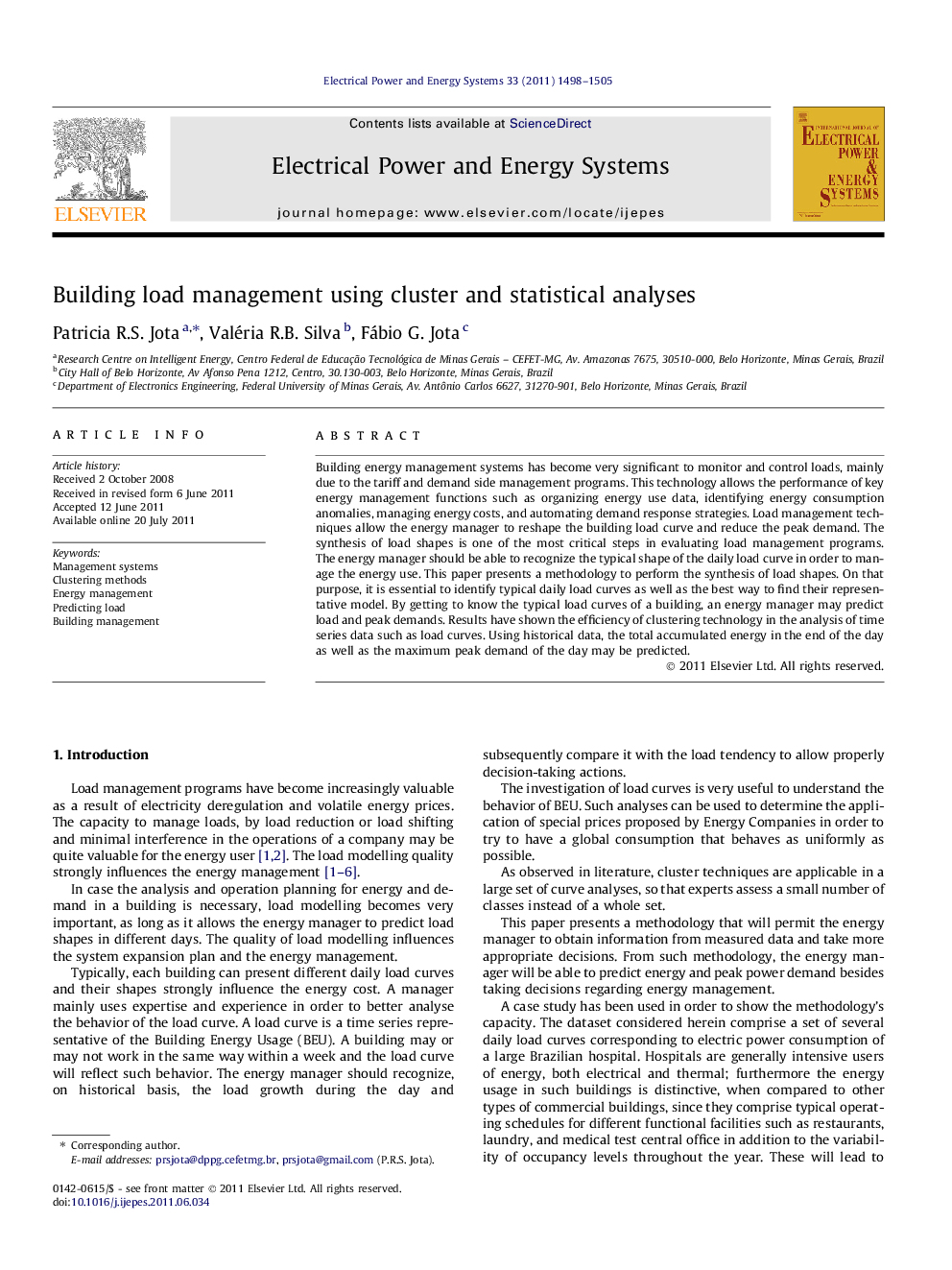| کد مقاله | کد نشریه | سال انتشار | مقاله انگلیسی | نسخه تمام متن |
|---|---|---|---|---|
| 400527 | 1438769 | 2011 | 8 صفحه PDF | دانلود رایگان |

Building energy management systems has become very significant to monitor and control loads, mainly due to the tariff and demand side management programs. This technology allows the performance of key energy management functions such as organizing energy use data, identifying energy consumption anomalies, managing energy costs, and automating demand response strategies. Load management techniques allow the energy manager to reshape the building load curve and reduce the peak demand. The synthesis of load shapes is one of the most critical steps in evaluating load management programs. The energy manager should be able to recognize the typical shape of the daily load curve in order to manage the energy use. This paper presents a methodology to perform the synthesis of load shapes. On that purpose, it is essential to identify typical daily load curves as well as the best way to find their representative model. By getting to know the typical load curves of a building, an energy manager may predict load and peak demands. Results have shown the efficiency of clustering technology in the analysis of time series data such as load curves. Using historical data, the total accumulated energy in the end of the day as well as the maximum peak demand of the day may be predicted.
► Daily load curves and their corresponding dynamic models are identified.
► Typical curves are used to predict the daily load profile and peak demand.
► Cluster analysis has enabled the classification of load curves in a few groups.
► Effective management of energy is feasible with the aid of our methodology.
Journal: International Journal of Electrical Power & Energy Systems - Volume 33, Issue 8, October 2011, Pages 1498–1505